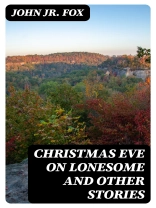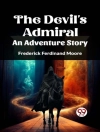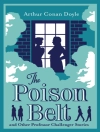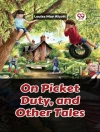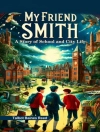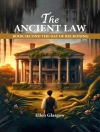In ‘Christmas Eve on Lonesome and Other Stories’ by John Jr. Fox, readers are transported to the rugged landscape of the American West through a collection of vividly detailed tales that capture the spirit of the frontier. Written in a straightforward and unadorned style, Fox’s stories portray the harsh realities of life on the frontier, with themes of survival, resilience, and the struggle for identity running throughout. The dialogue and descriptions are true to the time period, adding authenticity to the narratives. These short stories offer a glimpse into the lives of cowboys, settlers, and outlaws, each facing their own challenges and triumphs in the untamed wilderness. With a keen eye for detail and a deep understanding of human nature, Fox weaves together a tapestry of stories that resonate with readers today. John Jr. Fox, a descendant of pioneers, draws on his family’s history and his own experiences living in the West to bring authenticity to his writing. His deep connection to the land and its people shines through in the vivid characters and settings he creates, making ‘Christmas Eve on Lonesome and Other Stories’ a compelling read for those interested in historical fiction and the American West. I highly recommend ‘Christmas Eve on Lonesome and Other Stories’ to readers who appreciate well-crafted stories that delve into the complexities of human nature and offer a glimpse into the challenges and triumphs of life on the frontier. Fox’s writing is both engaging and insightful, making this collection a standout in the genre of Western literature.
Sobre o autor
John Jr. Fox, an influential American author, specialized in the poignant depiction of life and struggles in the Appalachian Mountain area. His celebrated works often drew upon the regional characteristics, infusing local color through dialects, customs, and environmental detail, which became emblematic of his literary style. His seminal volume, ‘Christmas Eve on Lonesome and Other Stories’ (1904), is a collection of short narratives that provides a window into the rustic life and the human condition in the southern highlands around the turn of the 20th century. It showcases Fox’s deft storytelling skills and deep empathy for his characters, while also capturing the complex interactions and social conventions of the rural communities he depicts. Each tale in the anthology, while differing in plot and characters, shares a common thread of heartfelt emotionality and sharp observation of the human spirit. Although Fox’s contributions are sometimes overshadowed by his contemporaries, his ability to evoke the regional essence and navigate the mores of his time marks a noteworthy chapter in the annals of American literature, particularly within the local color movement.
